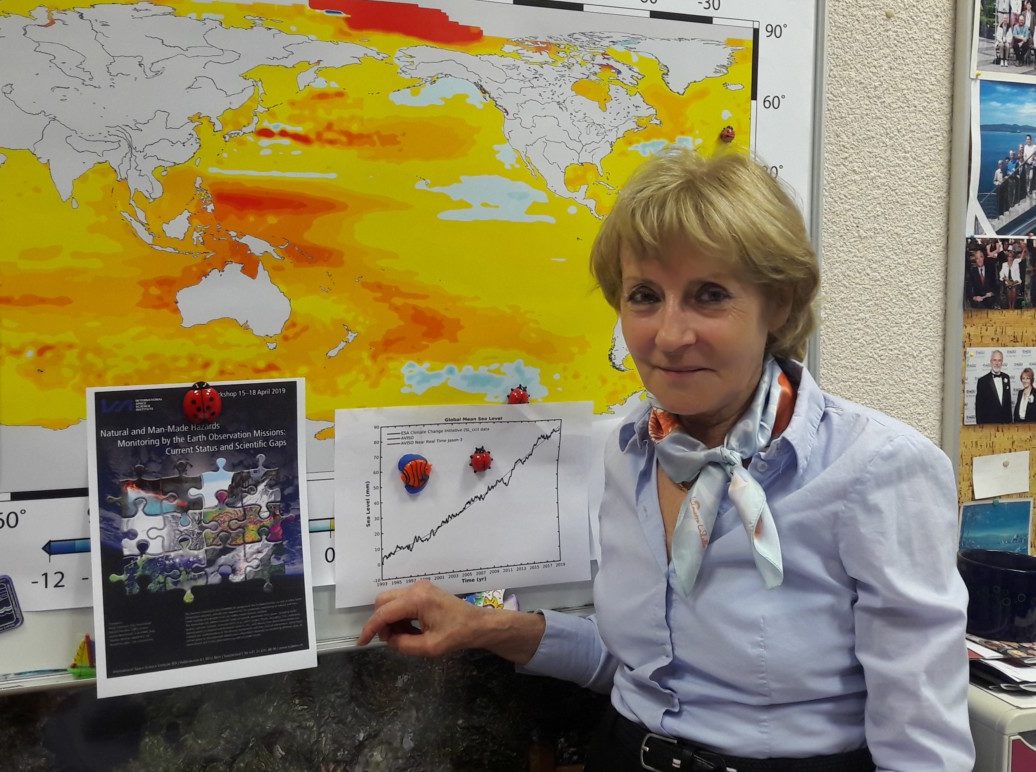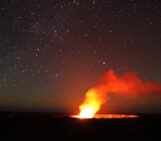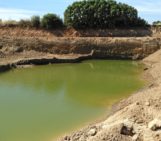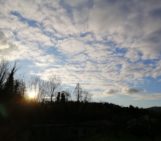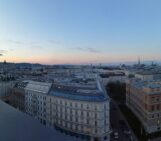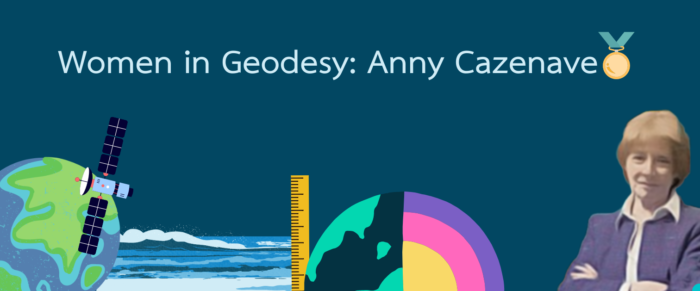
After introducing famous women in the history of Geodesy last month, we now turn to influential women in Geodesy who have received the prestigious Vening-Meinesz medal of the EGU. We have asked the first female receipient of the Vening-Meinesz medal, Anny Cazenave, about her view and story of being a women in science. She gave us inspiring answers to our questions.
Would you like to share your thoughts about what being a woman in science means to you?
Being a woman in science is nothing particular for me. I have chosen to prioritize productivity and expertise in science over other responsibilities, while balancing family demands and research involvement to the best of my ability. Overall, I never found that being a woman in science was a handicap. To me, excellence in research, curiosity, and passion should always remain the main goals, whether you are a man or a woman.
Was there an influential woman in your life (both inside the family and outside the family) who impacted you in a way to become a scientist?
No. I have always been attacted by research even when I was very young.
I initially wanted to be an astronomer, when I was still a university student. But after my PhD thesis on the rotation of the Earth, I was recruited to work for the CNES, the French Space Center to work on space geodesy. Since then I worked in different areas of Earth sciences, always using satellite observations.
I worked with a lot of students and scientific colleagues worldwide during my career. Owing to their scientific leadership, several of them have had inspiring and stimulating influence on my research. But overall, human relationships remain a fundamental component of scientific research. It is a collective adventure and this is certainly what I appreciated the most.
You’re one of the Vening-Meinesz medalists. We would like to hear a bit about your studies and what’s coming next.
I am currently working on sea level rise and climate change. With my coworkers, we routinely measure sea level change from global to local (coastal) scales using altimeter satellites. We also work at quantifying the processes causing sea level rise, namely ocean warming and land ice loss. In parallel, we study sea level rise in the world coastal zones and the associated impacts.
I am also a co-principal investigator of a project from the European Research Council dedicated to studying the deep interior of the Earth using global observable measures such as the Earth’s magnetic and gravity fields, and observations of the Earth’s rotation.
Can you give us some names of women in science (dead or alive) who inspire you?
No (but of course I very much admire scientists like Marie Curie who devoted her life to science at a time when women were not accepted for this job; It is much easier nowadays to become a scientist)
What message do you want to pass on to women and girls who want to pursue a career in science, more specifically in geodesy? Maybe a comment on how we can make science more accessible to young women and girls?
There are few points to consider: peer-mentoring provided by and for women scientists is extremely important (especially same-gender mentoring), and women who occupy higher positions within academia/institutes can serve as role models for junior women.
We also have to support female PhD students, post-docs and early career scientists, at the research lab level, conveying basic messages such as: work with passion, develop curiosity, pursue excellence and increase self-confidence.
I have a few recommendations to young women scientists:
- Involve yourself in decision-making roles at every level in the research institution: 1) as it helps women to be involved in key committees that set scientific policy, in panels that give grants and recruit candidates, etc., 2) it is very important to ensure gender balance (men are still over represented in such committees), and 3) criteria in selecting proposals, candidates, etc., are influenced by male patterns of working…;
- Keep a good balance between personal life and work;
- Some scientific work can be done at home…
I would finish with the the old saying «the more you have to do, the more organized you get» as it definitely applies to women scientists!
We would like to thank Anny for the time to answer our questions. Interested to read more about Anny, then have a look at another recent interview with her and the Columbia Climate School.
Stay tuned for more stories about past female Vening-Meinesz medalists in the near future…
PS: Interested to know who Vening Meinesz was then read our blog post about him here.

